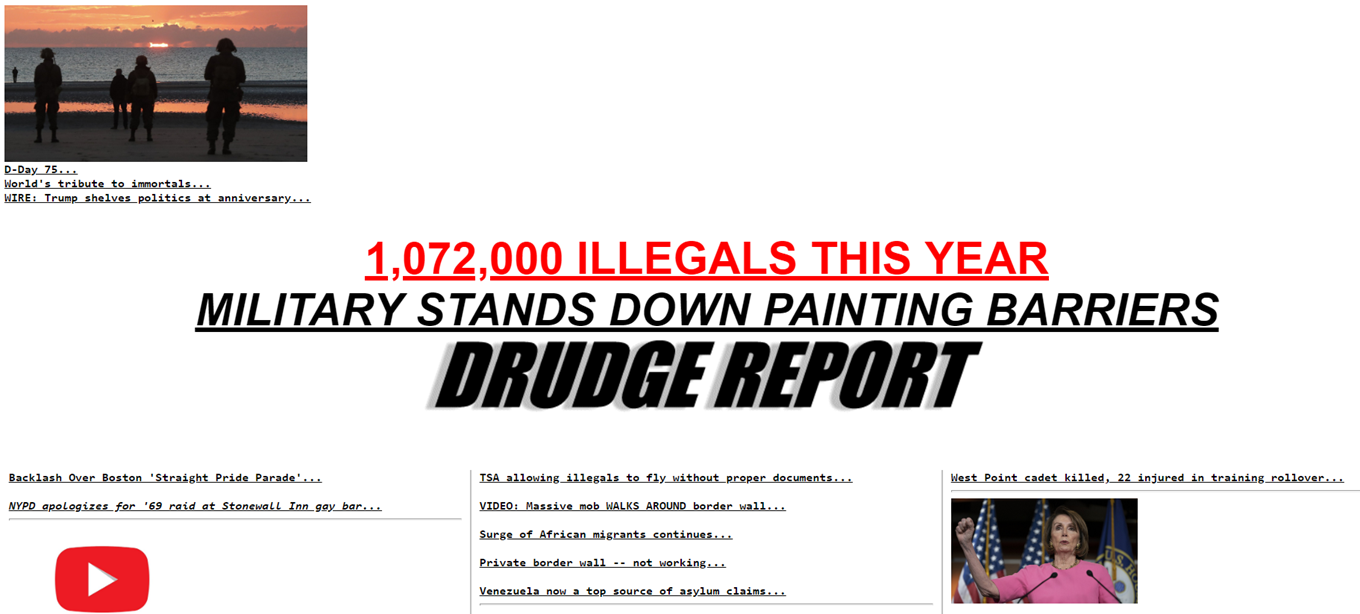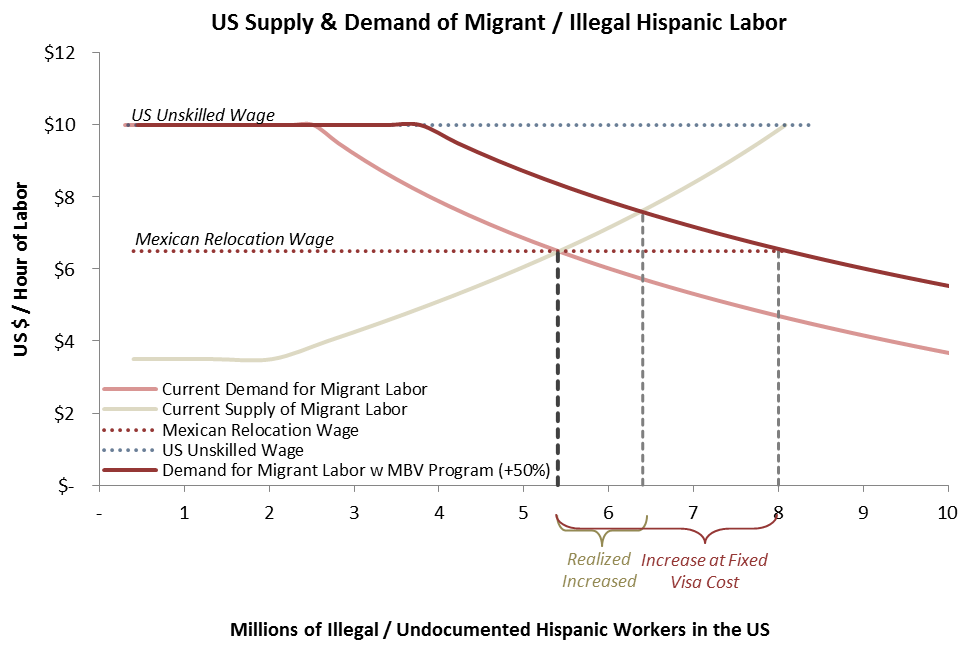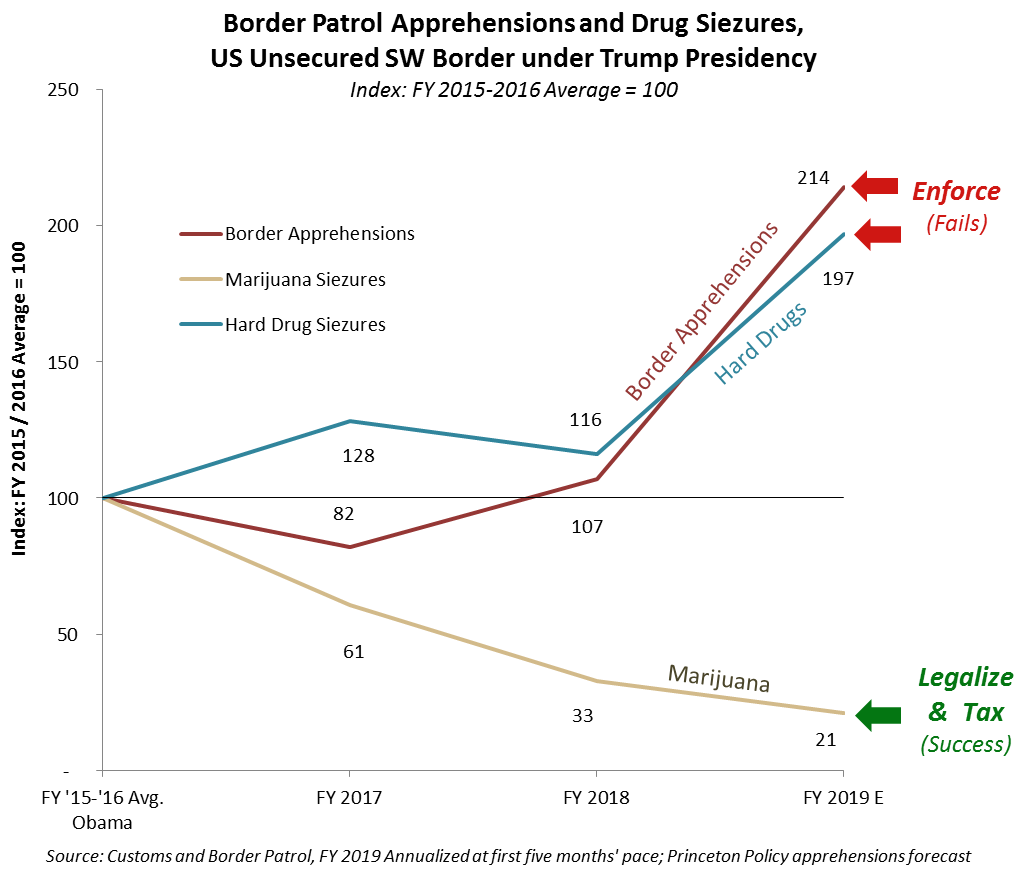In the case of the traditional vices – alcohol, gambling, prostitution, marijuana, hard drugs and migrant labor – the prohibition is set with volumes, not prices. In the case of wage and price controls, the manufacture, warehousing, distribution and consumption of a good or service is not illegal. Only transacting at market prices is prohibited. A New York restaurateur can hire an employee and the employee can provide all the services required, just not at a price below the minimum wage floor. Nor is it a crime to possess or manufacture, say, toilet paper in Venezuela. Only its sale at a market value is illegal.
By contrast, volume constraints usually arise because the government believes a given good or service is inherently detrimental. Thus, US government policy seeks to prevent the consumption of heroin or cocaine because policy-makers believe it results from involuntary addiction and is unhealthy for the consumer. Therefore, all of the production, transport, storage, sale and consumption of prohibited items are illegal. Migrant labor falls into this category: an unauthorized immigrant in the US is illegal by definition, as it is to employ or provide certain services to such migrants.
Markets subject to prohibitions or below-market prices will be supply-constrained. Labor or goods will always be in shortage in a supply-constrained market. This means customers who are willing pay above-market rates for goods or services are easy to find. The key to entering the market is a willingness to take risk, break laws and protect one’s turf with force to get supply to market. It is all about supply, whether smuggling drugs over the border or crossing the border illegally in the hopes of find a job.
Supply-constrained markets always involve government force to keep buyers and sellers from willingly coming together to transact for the given good or service. In the case of drugs, this implies drug seizures and arrests of drug dealers and fines and jail times for purchase, possession or usage for drug users.
In the case of migrant labor, the government attempts to prevent sellers of labor from entering the country via border control, including an army of border patrol agents, hundreds of miles of wall, and the agency ICE, tasked with finding migrants and deporting them. Employers are to be formally sanctioned for failing to use E-Verify and employing undocumented labor.
Ending Black Markets
Black markets can be addressed with three different approaches.
• Suppress Supply
As we note above, governments without fail try to suppress black markets by focusing on supply, arresting drug dealers or detaining hotel maids and berry pickers attempting to sneak across the US border. Supply suppression is politically attractive because it externalizes the problem. The problem is the fault of Colombian or Mexican drug dealers or tricky Hondurans enlisting children in fake asylum claims to gain entrance to the US labor market.
Supply suppression has never worked, because enforcement provides the incentive for its own undoing. When supply is suppressed, prices go up, sales opportunities are plentiful and competition is reduced. The effect is much like pressing on a spring. The harder one presses, the greater effort required, the greater the resistance and the more violent the rebound when pressure is released.
Enhanced enforcement increases black market suppliers’ incentive to bring contraband to market. This results in the most extraordinary creativity, certainly in drug smuggling, which has employed ‘mules’ with marijuana-filled backpacks, disposable aircraft, high speed boats, catapults, tunnels, swallowed packets, or drugs canned or hidden in fruits vegetables or manufactured goods – the list is endless.
In the case of migrant labor, options can include walking across the unsecured border; fake papers; tunnels under or ladders over the border; disabling border barriers; fake asylum claims; visa overstays; conveyance hidden in trucks, boats, aircraft; transit over the Canadian border and other means. The very worst, and perhaps the most common, means to circumvent enforcement is bribery, or as the case may be, intimidation and violence. It is the corruption of law enforcement, the bribery of politicians and judiciary, and the intimidation of the press which wreak the greatest damage on society.
Because supply suppression creates the economic incentive for its own undoing, it has virtually no track record of success. True, supply suppression has historically reduced the flow of illicit goods by 10-15%, but this is merely a dent in the business and very far from a meaningful prohibition. Much blood and treasure is spilt for a near meaningless reduction in supply.
• Suppress Demand
Demand suppression is as effective as it is unpopular.
Cold turkey detention of drug addicts vastly reduced addiction rates for hard drugs in Japan and Singapore.
Arizona’s hard line on migrants has also shown notable success. The state brought in tough anti-illegal labor laws in 2007 and reduced their undocumented population by half. Not only that, they have kept the numbers down by closing businesses that use undocumented labor.
Of course, this internalizes the problem. Rather than blaming migrants, enforcement focuses on their US employers. The question is whether such an approach is politically viable.
Nor is it clear that Arizona’s approach achieved its intended goals. On the one hand, Arizona did manage to materially reduce education and health expenditures associated with its undocumented population.
On the other hand, Arizona is the poster boy for unintended consequences with respect to its labor market. When Arizona implemented its tough anti-migrant policies in 2007, Arizona had the 16th best unemployment rate among the states. Today, it is in 45th place. In fact, Arizona has the second worse relative record (change in rank) of all the states since 2007. Moreover, six of the seven states which enacted restrictive laws regarding use of undocumented labor have seen their relative rank, in terms of unemployment rate, deteriorate compared to the other states.
Coercive interventions in markets have a habit of backfiring, and this includes actively preventing businesses from operating by depriving them of employees. Still, demand suppression is a viable option for the conservative purist to the extent the politics are palatable.
• Legalize and Tax
The classic remedy for a black market is to legalize and tax it. The US chose this route with alcohol, gambling and more recently, marijuana. Rather than trying to prohibit a good or service entirely, demand is regulated by a tax regime, with the goods legalized otherwise.
Historically, this approach will eliminate 95% of the criminal pathology associated with prohibition, For migrants, this includes illegal border crossing, murder, rape, kidnapping, human trafficking, theft, corruption, intimidation, smuggling and tax evasion. Domestically, it will materially reduce wage theft, workplace sexual harassment and worker exploitation.
Importantly, legalization does not end all the problems associated with prohibited goods. Alcohol consumption remains the third leading cause of preventable death in the US and is associated with a loss of $250 bn in GDP annually. Nevertheless, the public has accepted these as ‘costs of doing business’. Similarly, the legalization of gambling created much anxiety at the time, but since then, the capital of gambling, Las Vegas, has been transformed into an adult amusement park. Gambling addiction remains a problem for some people, but “what happens in Vegas stays in Vegas” has risen to a selling point, rather than a cry to shutter the city.
Marijuana legalization has – and continues – to cause consternation among politicians, with New Jersey’s attempt to legalize now stalled. And yet, society has not collapsed in those states where marijuana is now legal. Colorado government has prepared a report on its experience at the five year mark for recreational marijuana legalization. (The summary is well worth a read.) There are issues, but far from being a disaster, marijuana legalization has actually improved some statistics (and underscores again that legal alcohol is an order of magnitude more dangerous substance than cannabis).
Migrant workers – primarily interested in mowing lawns or making up the hotel beds in decadent Las Vegas – represent a far lower risk to society than any prohibited drug or traditional vice. Legalization will not make all associated problems go away. Migrants, as the rest of society, will still occasionally commit crimes of various sorts. Notwithstanding, the history of legalization shows that this sort of anti-social behavior will fall to a fraction of its current level.
Moreover, legalization closes the topic as a political issue. Despite the adverse effects of alcohol and gambling, no one is calling for a new prohibition. So it will be with migrant labor. If a well-ordered, fair, transparent and accountable channel for migrant labor is established, and if the government is appropriately compensated for providing labor market access, history shows that illegal immigration will disappear as a political issue of major importance.
Comparing Supply Suppression and Legalize-and-Tax Approaches
As luck would have it, the US is currently running a natural experiment on the unsecured southwest border with Mexico. Three types of contraband are coming over the border: economic migrants, hard drugs and marijuana.
Despite the most aggressive efforts of the Trump administration, both hard drug seizures and border apprehensions have more than doubled compared to the last years of the Obama administration. Not only is a crackdown not slowing traffic, it is actually associated with a doubling of flows!
































